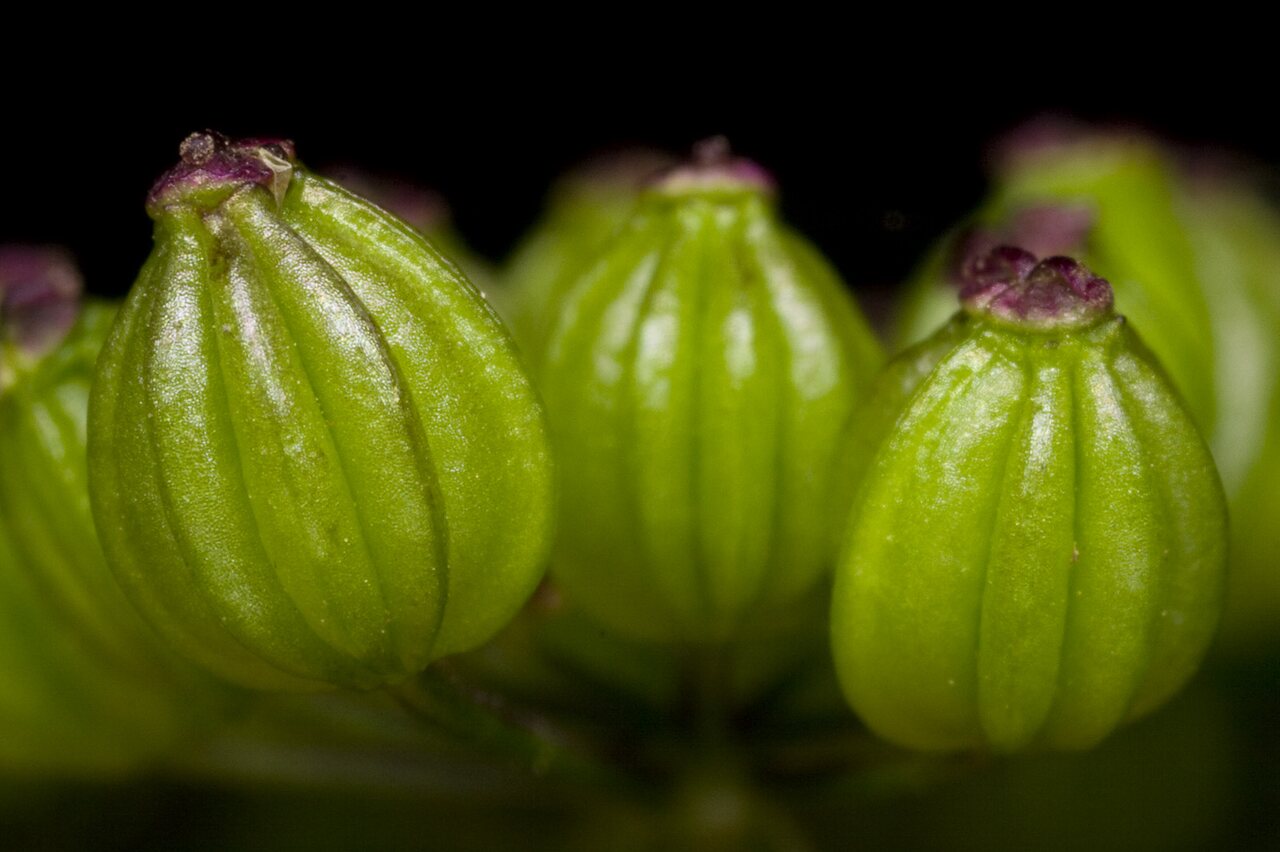
Aethusa cynapium fruits · nuodingoji šunpetrė, vaisiai
- fool's parsley, fool's cicely, poison parsley
- Ager-Tidsel, Hunde-Tidsel, Hundepersille, Kæmpe-Turt
- Hundspetersilie
- nuodingoji šunpetrė
- suņpētersīlis
- blekot pospolity
- Bantistel, Parksallat, hukanputki, vildpersilja
- en.wikipedia.org/wiki/Aethusa_cynapium
- luontoportti.com/en/t/1825/fools-parsley
- gbif.org/species/5371825
It is an annual (rarely biennial) herb native to Europe, western Asia, and northwest Africa. It is the only member of the genus Aethusa. It is related to hemlock and water-dropwort, and like them it is poisonous, though less so than hemlock. It has been introduced into many other parts of the world and is a common weed in cultivated ground.
It has a fusiform root and a smooth hollow branched stem growing to about 80 cm high, with much divided (ternately pinnate) smooth leaves with an unpleasant smell, and small compound umbels of small irregular white flowers.
Poisoning from fool's parsley results in symptoms of heat in the mouth and throat. A post-mortem examination has shown redness of the membrane lining the gullet and windpipe, along with symptoms of slight congestion within the duodenum and stomach. Some toxins are destroyed by drying, and indeed, hay containing the plant is not poisonous.
Monotipinės šunpetrės (Aethusa) genties augalas. Augalas paplitęs Europoje, vakarų Azijoje ir šiaurės vakarų Afrikoje. Vienmetė, nemalonaus kvapo žolė, turinti verpstišką šaknį ir tuščiavidurį stiebą. Lapai tamsiai žali, apatinė pusė blizga. Skėčiai su 12-18 stipinų. Žydi gegužės – spalio mėn. Auga patvoriuose, daržuose. Augalas labai nuodingas, ypač kiaulėms. Taip pat pavojingas ir žmogui, nes jauni lapai panašūs į petražolės, nuo kurios skiriasi labiau blizgančia apatine puse ir silpnu lyg česnaką primenančiu kvapu.
‥
0 comments
Add a comment